Computer-aided acoustic design--RAYNOISE geometric acoustics software introduction
RAYNOISE is a large-scale sound field simulation software system developed by LMS, a Belgian acoustic design company. Its main function is to simulate various acoustic behaviors of closed or open spaces and semi-enclosed spaces. It can accurately simulate the physical process of sound propagation, including: specular reflection, diffuse reflection, wall and air absorption, diffraction and transmission, and can ultimately recreate the listening effect of the receiving position. The system can be widely used in hall sound quality design, industrial noise prediction and control, recording equipment design, voice system design in public places such as airports, subways and stations, and noise estimation in roads, railways and stadiums.
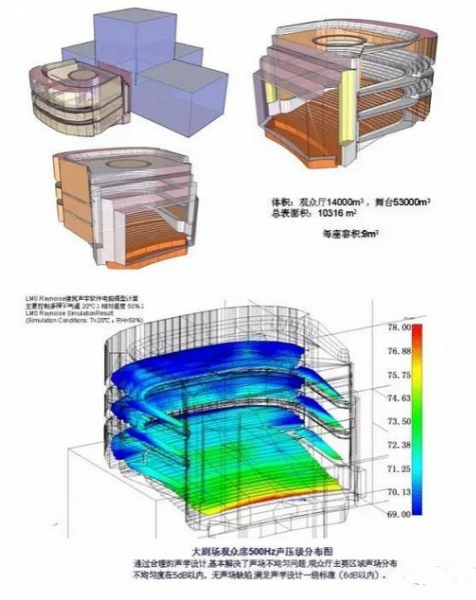
To describe the acoustic medium, SYSNOISE uses the most advanced numerical methods. They are based on direct and indirect boundary element methods, or acoustic equations of acoustic finite elements/infinite elements. The structure itself is expressed by a structural finite element model, which can be imported from all mainstream structural finite element and mesh generation tools. All analysis modules are fully integrated in the core environment, supporting multi-models and 3D graphics.
SYSNOSISE has powerful integrated pre- and post-processing functions, with mesh checking and correction tools. Post-processing can draw color pictures, vector fields, deformed structures, as well as XY graphs, bar graphs and polar coordinate graphs, and also includes animation display and sound playback.
Basic principles of the RAYNOISE system
The RAYNOISE system can essentially be considered as a sound quality auralization system (for details about "auralization", see reference [1]). It is mainly based on geometric acoustics. Geometric acoustics assumes that sound waves in an acoustic environment propagate in all directions in the form of sound lines. After the sound lines collide with the medium or interface (such as the wall), part of the energy will be lost. In this way, the energy accumulation method of sound waves at different positions in the sound field is also different. If an acoustic environment is regarded as a linear system, then only the impulse response of the system needs to be known to obtain the acoustic effect at any position in the acoustic environment from the characteristics of the sound source. Therefore, obtaining the impulse response is the key to the entire system. In the past, simulation methods were mostly used, that is, using scaled models to obtain impulse responses. Since the late 1980s, with the rapid development of computer technology, digital technology has gradually become dominant. The core of digital technology is to use multimedia computers for modeling and program to calculate impulse responses. This technology is simple, fast and has continuously improved accuracy, which are unmatched by analog technology. There are two well-known methods for calculating impulse response: Mirror Image Source Method (MISM) and Ray Tracing Method (RTM). Both methods have their own advantages and disadvantages [1]. Later, some methods that combine them emerged, such as Conical Beam Method (CBM) and Triangular Beam Method (TBM) [1]. RAYNOISE uses these two methods in combination as its core technology for calculating sound field impulse response [2].
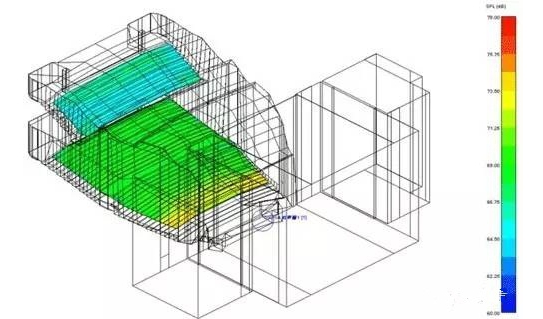
Computer simulation effect diagram of Laiwu Auditorium sound field
Application of RAYNOISE system
RAYNOISE can be widely used in industrial noise prediction and control, environmental acoustics, architectural acoustics and the design of simulated real systems, but the designer's original intention was still room acoustics, that is, it is mainly used for computer simulation of hall sound quality. To design the sound quality of a hall, the first requirement is to accurately and quickly establish a three-dimensional model of the hall, because it is directly related to the accuracy of computer simulation. The RAYNOISE system provides a friendly interactive interface for computer modeling. Users can directly input three-dimensional models generated by AutoCAD or HYPERMESH, or select models from the system model library and complete the definition of the model. The main steps of modeling include:
(1) Start RAYNOISE;
(2) Select the model;
(3) Enter the geometric dimensions;
(4) Define the materials and properties of each surface (including sound absorption coefficient, etc.);
(5) Define the sound source characteristics;
(6) Define the receiving field;
(7) Other instructions or definitions, such as the number of sound lines considered, the number of reflection levels, etc.
The user can use the mouse to view the characteristics of the defined model and its internal structures from different angles on the screen (distinguished by color). Then the calculation can be started. By processing the calculation results, acoustic parameters such as the sound pressure level, A sound level, echogram, and frequency pulse response function at a certain point in the receiving field of interest can be obtained. If you want to know the listening effect of this point, you can first convert the impulse response into a binaural transfer function and convolve it with the dry signal recorded in the anechoic room in advance, so that you can hear the listening effect of this point through your ears.
Computer acoustic design simulation effect diagram of the National Theatre
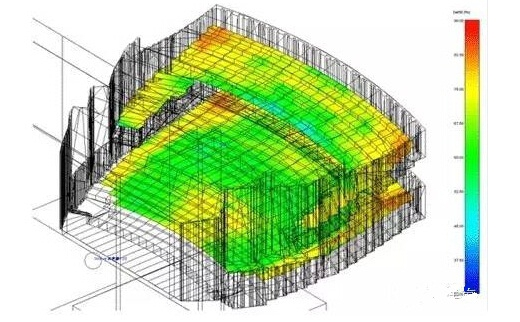
Features of RAYNOISE
Compared with other sound field simulation software that have appeared in the past 10 years, such as Signalgic's Hypersignal-Acoustic3.4 and EASE2.0, RAYNOISE is more mature in terms of use and function. It has formed a relatively complete and independent auralization system. Hypersignal-Acoustic3.4 can only serve as a software and hardware interface for other auralization software [3], that is, it can only complete the work of convolving the dry signal with the impulse response from other software and simulating the listening effect; EASE2.0 also needs to be used in conjunction with EARS (Electronically Auralization Room Simulation) to achieve auralization.
Computer simulation effect diagram of the sound field of the military band concert hall
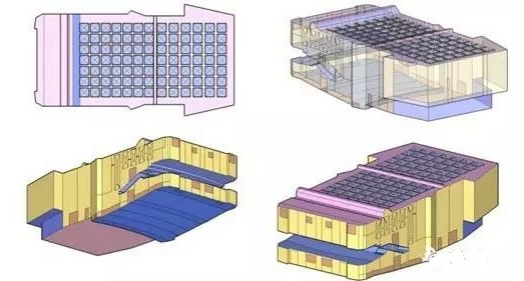
RAYNOISE's shortcomings
However, although the RAYNOISE Revision 3.0 system has made great improvements on the basis of previous versions, and has made breakthroughs in both usage and calculation accuracy, it is always based on geometric acoustics, so it will inevitably be limited by geometric acoustics. For example, its simulation effect in low-frequency or small-scale space is relatively poor, which will inevitably greatly reduce its application scope. For another example, it can only give the simulation results of simple sound sources (such as point sources) at a given point, but it is powerless for moving sound sources, distributed sound sources, directional sound sources and more complex situations
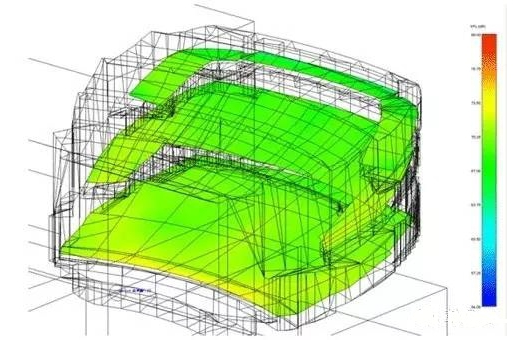
Computer simulation effect diagram of the sound field of the Nanjing Radio and Television Center Theater
LMSSYSNOISE--Acoustic-Vibration Coupling Analysis Software SYSNOISE is the most advanced acoustic-vibration analysis software on the market, but it does not require users to be acoustic experts.
SYSNOISE is a pioneer in the design, fault diagnosis and optimization of the global acoustic-vibration field, with powerful functions. From the prediction of the sound field of the cavity to the analysis of the sound field around the object, it can even calculate the response of the structure under the action of the sound field, thus helping noise control engineers to optimize the acoustic-vibration characteristics of the product. SYSNOISE's excellent users are all kinds of technical personnel in the industry, such as: research and development engineers like flexibility, occasional users need an easy-to-understand graphical interface, and design engineers rely on online "wizards" to help them complete the analysis. Sound radiation from vibration sources calculates the radiated sound field on the surface and any point of the object from the vibration measurement results or finite element calculation results. For example: the noise of the engine and compressor, the sound radiation of the speaker. Sound field distribution predicts the sound field and structural vibration formed around the structure in the sound field. For example: submarine detection, the sound insulation effect of road noise barriers. Structural path propagation calculates the forced vibration response of the structure caused by dynamic excitation and the generated sound field. For example: engine bracket design, the influence of rotor imbalance.
Air path transmission loss calculates the transmission loss characteristics of the thin plate in the sound field, the size of the excited vibration, and the sound field on both sides of the plate. For example: satellite vibration caused by transmission noise, the propagation of sound waves through decorative panels, dishwasher noise
